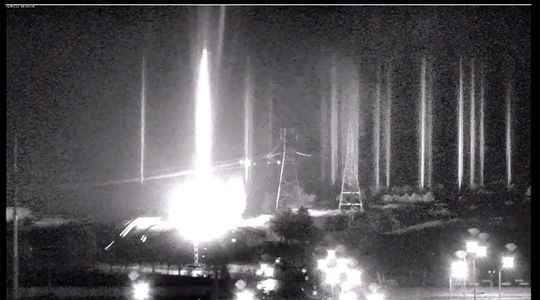An irresponsible attack. Since the beginning of the morning, amazement and concern have been in everyone’s head, while the Russian army targeted on the night of Thursday March 3 to Friday March 4 the Zaporizhia nuclear installation in Ukraine, the largest power plant from Europe. Located in southern Ukraine on the Dnieper River, 525 kilometers from Chernobyl, the site produces a fifth of the country’s electricity and almost half of its nuclear energy. The strikes injured two people among the plant’s security guards.
Ukrainian emergency services said they were able to access the site in the early morning to extinguish the fire, after being prevented from doing so by Russian soldiers. For Karine Herviou, Deputy Director General of the Institute for Radiation Protection and Nuclear Safety (IRSN), the situation calls for extreme vigilance.
L’Express: Do the events at the Zaporijjia power plant worry you? To what extent are nuclear power plants designed to respond to this kind of attack?
Karine Herviou: A certain number of external hazards are taken into account in the design of the reactors. Earthquakes, floods, accidental plane crashes… All this depends on the designers’ choice. On the other hand, these safety devices are not usually dimensioned for war situations.
The information we have about the event tonight indicates that a training building was affected and a fire broke out on site. These buildings are completely separate from the reactor buildings and the fire was brought under control. We are therefore not in a Chernobyl or Fukushima scenario, with a risk of core meltdown. However, we must remain very vigilant, because we are not immune to another event on an installation. But at the present time, the safety of the reactors is assured and no radioactive discharge is to be deplored.
In the event of an attack, does the design of Ukrainian power plants provide effective protection against the risk of core meltdown and radioactive releases?
The Ukrainian reactors, which are Russian technology reactors (VVER-1000) are aligned with international standards. This is comparable to French safety standards. The preponderant risk in Ukraine at the present time is a loss of electrical power to the plant, which feeds the plant’s safety systems.
But you should know that in such a scenario, each reactor in Ukraine has four emergency power units that can operate for seven to ten days. It would seem that the Ukrainians can bring firefighters on site to install mobile equipment to prevent core meltdown. The reactor has a containment enclosure to prevent radioactive releases.
Shouldn’t the reactor be shut down now in the event of a new attack?
We can completely stop the reactors and the chain reaction. But the fuel will still release a very significant amount of energy, which will only be evacuated over the long term. In Fukushima, this is what the operators of the plant had done, the reaction had been stopped but after a while, the core cooling systems no longer worked, causing the core to melt. and radioactive releases.
The risk in the event of a new attack would be to hit a building with safety systems linked to the reactors. These systems are doubled, even tripled on the Ukrainian reactors, so there are many back-up systems to deal with possible accidental situations.
